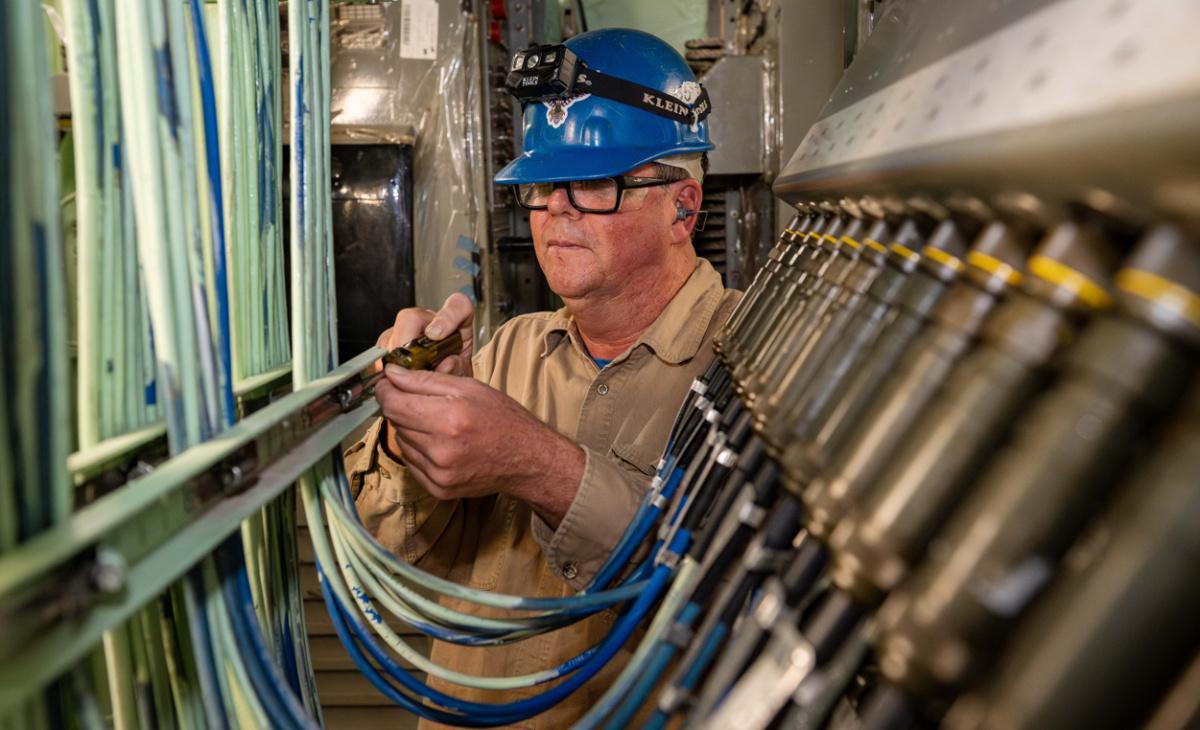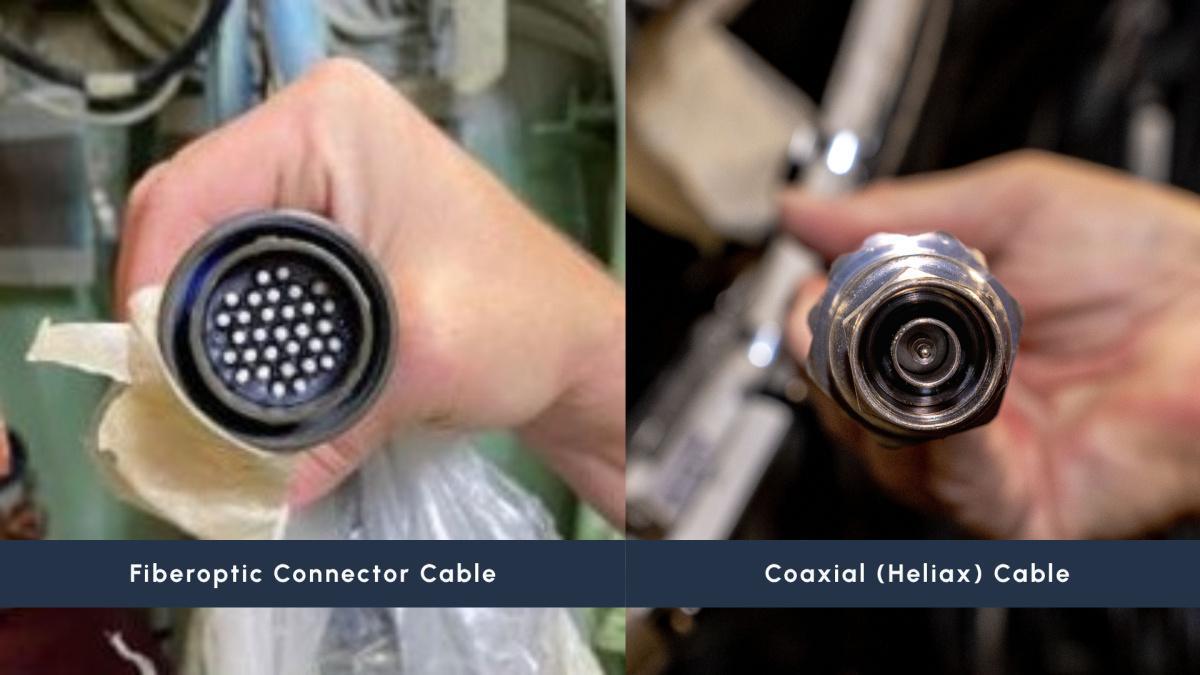Every ship system, from propulsion to radar to weapons, depends on coaxial and fiber optic cables to carry critical signals. When these cables are damaged, it leads to rework, adding time, cost and frustration to the job.
WHY IT MATTERS
These aren’t just wires. They’re the ship’s nervous system, responsible for carrying critical communications and signals that keep the ship—and therefore, the men and women aboard it—able to fight, defend and survive.
- Even a single damaged cable can weaken key systems, from propulsion and power to radar, communications and weapons
- Every delay is one that prevents our servicemembers from having the tools needed to complete their mission
- Failed tests mean lost days and repeat work
“You don’t always see the damage when it happens. You only find out when the system fails a test and everything has to be redone. All of it can be avoided if we slow down, stay aware and remember how every job on this ship ties into the next.” — Phillip Howell, Electrical Foreman
WHAT TO KNOW
Coaxial and fiber optic cables require more care than standard electrical cables. Once damaged, they must be repulled or replaced.
- Coaxial cables (often branded as Heliax) have a hollow core and thin jacket that crush or kink easily
- Fiber optic cables use glass that is thinner than a human hair to send light signals—a single break can ruin an entire run
“Fiber isn’t forgiving. One careless step can crush a line, and the entire run has to be started over. If we slow down and protect the cable in front of us, we save everyone time and keep the work moving.” — Kent Matulich, Electrical General Foreman
ACTIONS TO TAKE
- Watch your step: Never walk or place objects on exposed cables
- Don’t hang anything: No toolbags, hoses or materials from cables
- Cover it: Use plywood over exposed runs in false decks
- Handle carefully: Avoid sharp bends, kinks or stretching during pulls
- Inspect before you pull: Look for damage before unrolling
- Protect during hot work: Sparks and heat can ruin jackets and cause failures
“Every cable we install is a test of our attention to detail. Protecting it isn’t just about avoiding damage. It’s about proving we can meet the standards that keep this shipyard and every ship we build at the highest level of quality.” — Charles LaRue, Quality Director
THE BOTTOM LINE
A damaged cable can stop a ship from moving, communicating and fighting. Every step you take around these systems matters. Protecting cables protects our mission and those who depend on it the most.
ZERO FIRES. ZERO INJURIES. ZERO DAMAGES. ZERO COMPROMISE.


